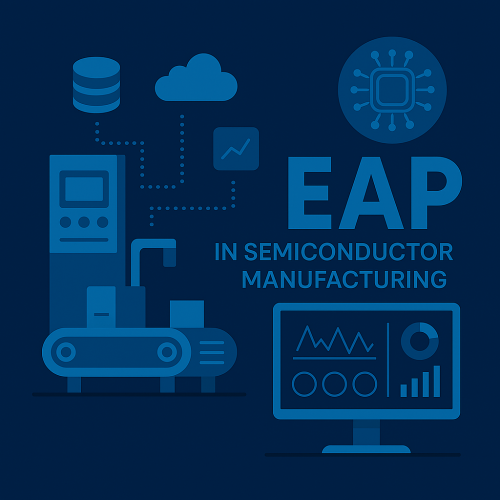As Southeast Asia continues to emerge as a dynamic hub for semiconductor manufacturing, factories are seeking scalable, cost-effective strategies to increase operational efficiency. One such solution—EAP host integration—is transforming how fabs automate tool control, data collection, and remote management. Tailored specifically for high-mix, cost-sensitive facilities, EAP (Equipment Automation Program) presents a practical roadmap for smart automation without massive capital expenditure.
From Singapore to Malaysia, Vietnam to the Philippines, manufacturers are increasingly adopting EAP host solutions for Southeast Asia to upgrade legacy systems and unlock the benefits of intelligent equipment integration.
Understanding EAP in Semiconductor Manufacturing
At its core, EAP in semiconductor manufacturing refers to host software designed to communicate with process equipment using standards like SECS/GEM. It enables centralized monitoring, remote command execution, and trace data collection—critical for achieving factory-wide visibility and control.
Unlike complex MES systems that require deep customization, EAP offers a modular, lightweight architecture suited for quick deployment. This makes low-cost fab automation with EAP particularly attractive for South Asian fabs looking to modernize without disrupting existing workflows.
By enabling SECS/GEM EAP integration, manufacturers can ensure SEMI-compliant communication between host systems and tools, regardless of vendor or vintage. With an EAP system for fab tools, even non-GEM-compliant machines can be retrofitted using protocol converters or plug-and-play gateways.

The Southeast Asian Advantage
Cost sensitivity is a defining factor for fabs across South Asia. Balancing budget constraints with automation goals often leads to creative solutions. EAP for South Asian fabs excels in this context, offering:
- Rapid ROI: Minimal setup costs compared to full MES deployments
- Flexible integration: Works with GEM-compliant tools and legacy equipment
- Scalable architecture: Supports expansion across multiple workcells or fabs
- Real-time control: Enables recipe management, state tracking, and alarm handling
These advantages make factory automation with EAP an ideal stepping stone toward full Industry 4.0 transformation. Small and mid-sized fabs can begin with basic host integration and scale up as automation maturity grows.
Furthermore, EAP software solutions are often bundled with visual dashboards, trace data reporting, and scripting engines—empowering fab engineers to configure workflows without heavy coding or IT support.
Smart Equipment Integration Made Simple
One standout benefit of EAP is its ability to simplify smart equipment integration. In South Asian fabs that operate a diverse mix of tools—etchers, coaters, lasers, and vacuum pumps—uniformity in communication is key. EAP equipment communication bridges this gap with standardized message handling and data abstraction.
With EAP, engineers can automate job starts, monitor equipment statuses, trigger alarms, and log historical data—all from a unified interface. This centralized view enhances equipment automation in fabs, helping reduce downtime and improve throughput.
The value grows further when combined with SECS/GEM-capable simulators for testing and validation. For example, engineers can use host simulators to verify message handling and state transitions before live deployment, essential for smooth onboarding of new tools.
Whether integrating a new inspection station or retrofitting a legacy coater, EAP equips South Asian fabs with the agility they need to stay competitive.
Conclusion: A Cost-Effective Pathway to Smarter Fabs
EAP for South Asian fabs is more than a software platform—it’s a strategic enabler for smarter, more agile manufacturing. By leveraging EAP host solutions for Southeast Asia, fabs can achieve powerful results on modest budgets: streamlined automation, improved data visibility, and enhanced tool reliability.
In a region where adaptability often dictates success, low-cost fab automation with EAP offers a clear and actionable roadmap. Through SECS/GEM EAP integration, equipment automation in fabs, and seamless EAP equipment communication, the promise of intelligent manufacturing is now within reach—even for small and mid-sized operations.
As Industry 4.0 continues to reshape the global semiconductor landscape, Southeast Asian fabs equipped with EAP are proving that innovation doesn’t have to break the bank—it just needs the right foundation.

